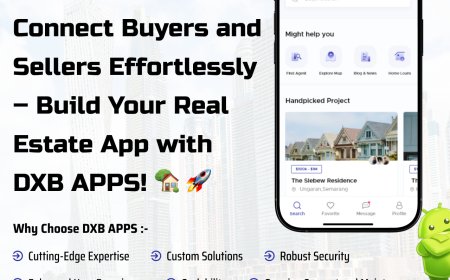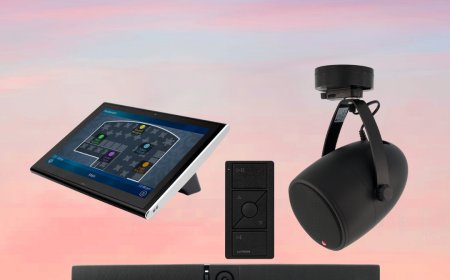B2B Cold Calling: Strategies, Benefits, and Tips for Sales Success
B2B cold calling remains one of the most effective ways to connect directly with decision-makers, build relationships, and generate qualified leads.
In the world of B2B (business-to-business) sales, one method continues to stand the test of time: cold calling. While digital marketing and automation have reshaped the sales landscape, B2B cold calling remains one of the most effective ways to connect directly with decision-makers, build relationships, and generate qualified leads.
In this blog, well explore the fundamentals of B2B cold calling, why it still works, key strategies to make your calls more effective, and how your team can master the art of cold outreach
What is B2B Cold Calling?
B2B cold calling is the process of reaching out via phone to potential business clients who havent interacted with your company before. The goal is to introduce your product or service, understand the prospects needs, and ultimately schedule a meeting or move them along the sales pipeline.
Unlike B2C cold calling, which targets consumers, B2B cold calling involves more complex sales cycles, higher-value deals, and conversations with professionals who are typically harder to reach.
Why B2B Cold Calling Still Matters in 2025
Despite being labeled by some as an "outdated" tactic, B2B cold calling continues to deliver results when done correctly. Heres why its still relevant:
1. Direct Human Connection
No matter how advanced digital marketing becomes, theres no replacement for real-time, human conversation. Cold calling creates an immediate, two-way dialogue that email or ads cant replicate.
2. Faster Feedback Loop
Cold calling offers instant insight into whether a prospect is interested. You can adjust your pitch, overcome objections, and build rapport within minutes.
3. Cuts Through the Noise
Decision-makers receive hundreds of emails a day. A well-placed callespecially one that's relevant and personalizedcan break through the clutter and get attention faster.
Preparing for a B2B Cold Call
The success of a cold call often depends on what happens before you even pick up the phone. Here are essential prep steps:
1. Research Your Prospect
Know who you're calling. Look into their company size, industry, recent news, and their role within the organization. Use LinkedIn, company websites, and tools like ZoomInfo or Lusha to gather insights.
2. Define Your Value Proposition
What problem does your solution solve for their business? Focus on how your product or service delivers ROI, saves time, or drives efficiency.
3. Build a Calling Script (But Stay Flexible)
Create a basic outline or script to guide your call. It should include:
-
An engaging opener
-
A clear value statement
-
Qualifying questions
-
A strong call-to-action
Avoid sounding roboticuse the script as a reference, not a crutch.
The Anatomy of a Successful Cold Call
Lets break down a typical B2B cold call into manageable phases:
1. The Opening
Your first 10 seconds matter the most. Avoid generic intros like How are you today? Instead, try:
Hi [Name], this is [Your Name] from [Company]. I know Im catching you out of the bluedo you have 30 seconds so I can tell you why Im calling?
2. The Hook
Quickly highlight a benefit or trigger based on your research:
I saw your company recently expanded into the APAC region. We help firms streamline cross-border compliance, and I thought it might be worth a quick chat.
3. Discovery
Ask open-ended questions to learn about their needs and pain points:
-
What tools are you using today for this process?
-
What are your biggest challenges in this area?
4. Value Pitch
Now tie your solution to what they just told you:
Based on what you shared, it sounds like we could help you cut your onboarding time by 30%. Our clients in [similar industry] saw strong results within the first quarter.
5. The Close
Never end without a next step. If theyre interested:
Would you be open to a 15-minute call next week to dive deeper into how we can help?
If theyre not ready:
Totally understand. Would it be okay if I follow up in a couple of months?
Common B2B Cold Calling Challenges (and How to Overcome Them)
1. Gatekeepers Blocking Access
Receptionists and assistants often protect executives time. Build rapport, be respectful, and ask smart questions like:
I understand [Name] is busycould you help point me in the right direction?
2. Rejection Fatigue
Cold calling involves hearing no often. Maintain a positive mindset and treat each call as practice, not failure.
3. Low Contact Rates
Try calling at different times (early morning or late afternoon) and use parallel dialing tools to improve efficiency.
Cold Calling Tools to Boost Productivity
-
CRM Software (e.g., HubSpot, Salesforce): Track leads and call history.
-
Dialers (e.g., Aircall, Kixie): Automate call sequences and increase call volume.
-
Scripting Tools: Store and optimize call scripts for different personas.
-
AI Analytics (e.g., Gong, Salesken): Analyze conversations to improve performance.
Metrics to Track Cold Calling Success
To improve performance, measure the following KPIs:
-
Call-to-conversion rate
-
Number of dials per day
-
Connection rate (calls that reach a person)
-
Appointment rate
-
Average call duration
-
Objection types and frequency
Use these metrics to refine your approach, scripts, and targeting strategy.
Final Thoughts: The Future of B2B Cold Calling
While automation and AI are transforming sales, B2B cold calling isnt going awayits evolving. Modern sales reps who blend empathy, research, and data-driven insights will always have a competitive edge.
Whether youre building pipeline from scratch or nurturing long-term relationships, B2B cold calling remains a valuable part of a multi-channel outreach strategy. Embrace the discomfort, refine your skills, and youll find cold calling to be one of the most direct paths to new business opportunities.









































